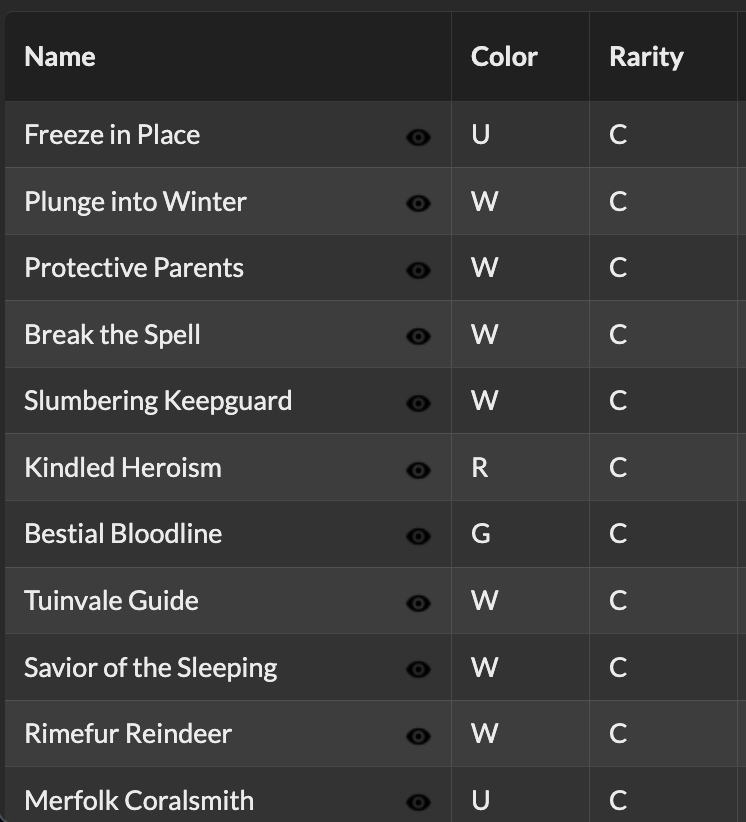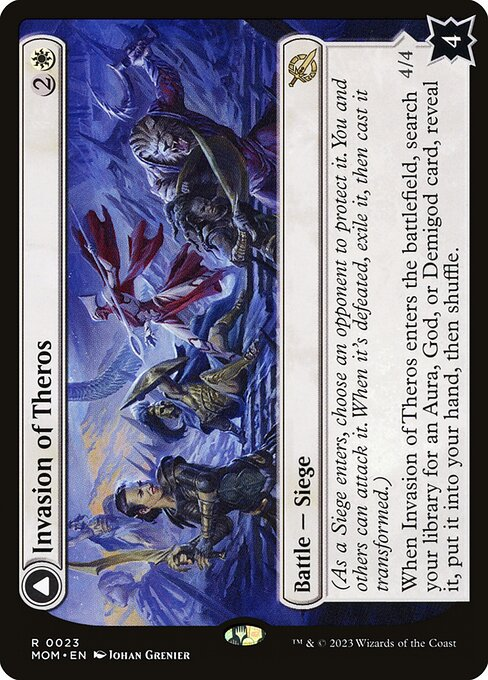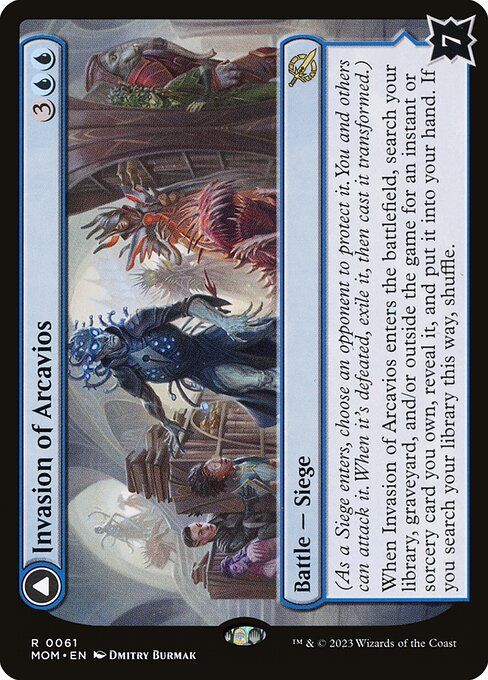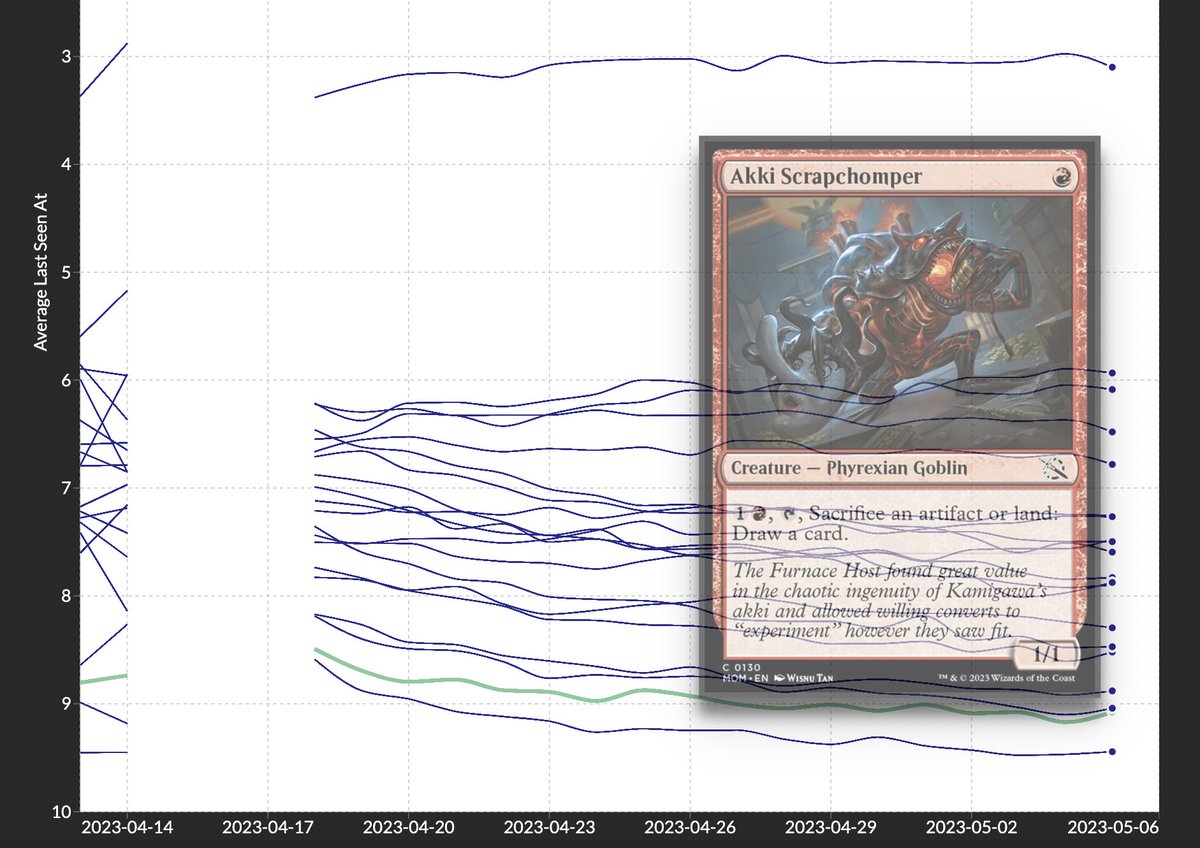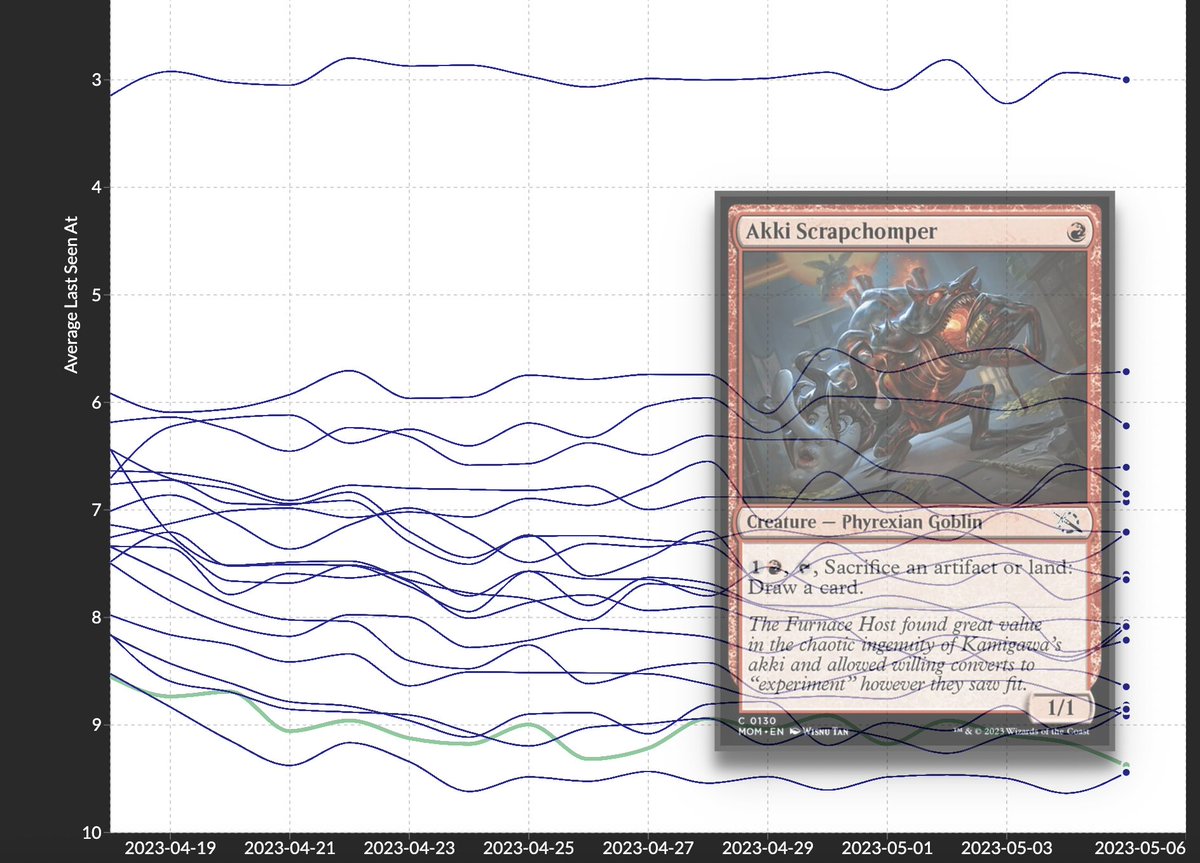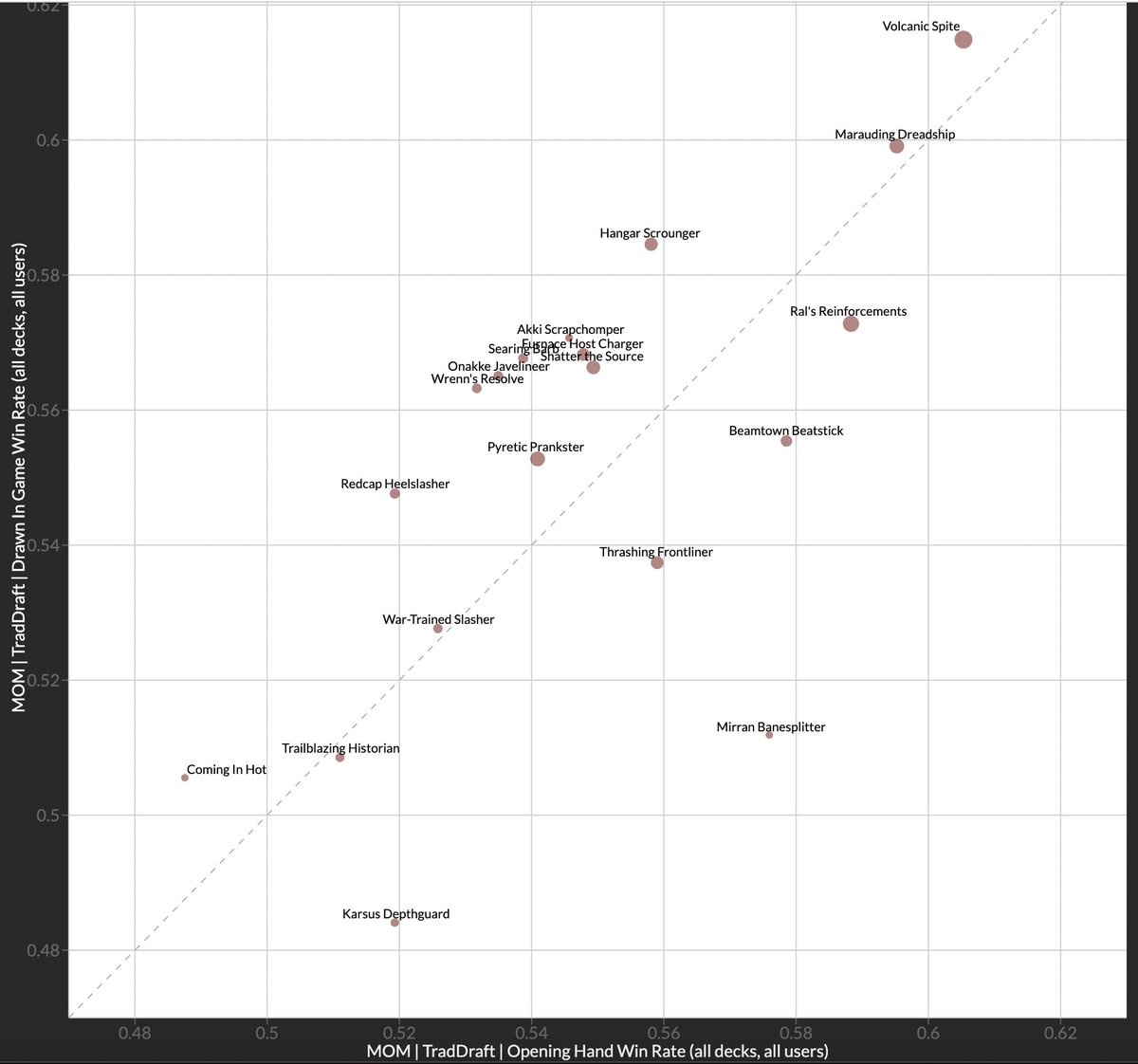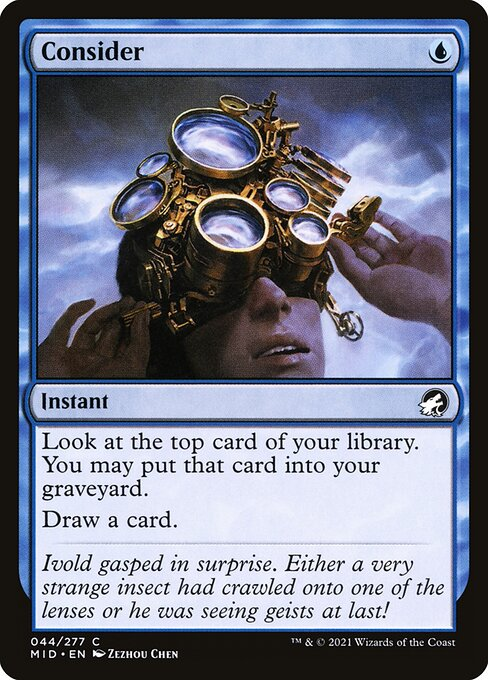I'm skipping past Symmetry Sage today, though I do want to talk about it later, because I really want to talk about Infuse with Vitality. ALSA 7.80, notably the lowest-picked Witherbloom card (as in, BG color ID). But I think it's actually quite key in some Witherbloom decks. 1/x 

As always, let's start with the baseline of this card. It's a combat trick/protection spell, similar to Demonic Gifts in KHM: you help your creature kill the opponent's creature, and save it by bringing it back tapped when it dies. So how does this compare to Demonic Gifts? 2/x 

In KHM, Demonic Gifts was best in elves as a way to get value off of triggers, like from Elderfang Disciple. And at first glance, it seems like this effect is much more awkward in STX, with not many triggers, and a lot of tokens and +1/+1 counters that lose value with Infuse. 3/x 

But I would argue that Infuse is actually very well positioned in Witherbloom as a card that plays out very differently from Demonic Gifts. Obviously, there's the explicit lifegain synergy, as Infuse gains 2 life, and many Witherbloom cards care about gaining life. 4/x
Also, Witherbloom's main tokens are usually pests. There's many synergies for using pests, so you'll often want to have some, and having some pests lying around means that it's relatively easy to turn the deathtouch from Infuse into a Bone Splinters on blocking a Fractal. 5/x 



There's also a small niche of playing mainly as a protection spell: if you're trying to do the combo Witherbloom thing with Dina and friends, protecting your combo pieces is very valuable. But Infuse isn't the best at that, and I wouldn't advocate for the combo route anyways. 6/x 



What I *actually* want infuse for has mainly been to leverage Witherbloom as a big creature stompy deck. Witherbloom Pledgemage and Blood Researcher are key cards here: both incentivize double blocks, and the deathtouch from Infuse lets you leverage double blocks very well. 7/x 



Other notable creatures that work well with Infuse: Professor of Zoomancy is a large body and has an ETB, and Bayou Groff is a large body that plays well with the stompy plan if you have the pest support. Both are double-blocked less, though (5 toughness is the sweet spot). 8/x 



I will note that I rarely actually end up in Witherbloom, since the Arena meta has been overdrafting most of the other Witherbloom cards. But the Witherbloom decks that I've been most impressed with have been like I've described, and I'm always scared of Infuse in those. 9/x
Conclusion: I've been seeing the most success with Witherbloom when built as a deck that wins with big green creatures, with incidental lifegain and pest synergy packages. Infuse plays well with both synergy packages, and is the best way to leverage those big creatures. 10/10
Again, I don't end up in Witherbloom much myself. But here's a trophy deck from a couple weeks back that played out like I described:
17lands.com/deck/0714de95a…
And for a better example, here's @Chord_O_Calls's Day 2 Open deck, that won him $2k:
17lands.com/deck/0714de95a…
And for a better example, here's @Chord_O_Calls's Day 2 Open deck, that won him $2k:
https://twitter.com/Chord_O_Calls/status/1391486438336864257
@threadreaderapp unroll
• • •
Missing some Tweet in this thread? You can try to
force a refresh





